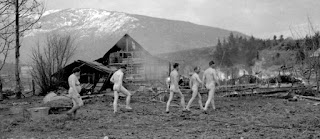Properly functioning Dingo packs can't be turned on and off like a tap...
When you spend many years studying the ecological function of Dingoes you learn that their function is highly dependent on stable social structures, this aspect of their biology is key in providing essential ecosystem services....
When in stable situations Dingoes go about their job largely unseen or unheard, providing protection both directly and indirectly to other species. The main characteristic that defines top predators is their ability to self regulate, with Dingoes this is achieved through hierarchal dominance, infanticide and territorial behaviour.
In stable situations Dingoes exist in extremely low densities and as top predators are the key in maintaining ecological balance.
In socially stable situations Dingoes live in family groups, only the dominant alpha pair breed, and produce one litter per year.
Each pack claims a large territory which is vigorously defended against other Dingoes, feral domestic dogs and mesopredators (cats, foxes, etc).
It is essential for Dingoes to maintain strong cohesive groups to defend territories against wandering intruders like feral dogs. In stable situations Dingoes will chase off or kill any feral or domestic dog that comes within their territorial range.
For the Dingo to function fully as top predator it's important to keep their social pack structure. Genetic integrity of Dingo communities is highly dependent on them maintaining stable social structures. (They are not so hard to understand)
Dingoes can become super abundant as a result of baiting regimes, natural population suppressants are lost as a result of social unrest....Also when packs are disrupted through baiting this is when hyper-predation is more commonly seen. It is a naturally instinctive behaviour that is curbed by education from piers and hierarchal dominance. This is typical in unstable situations where baiting regimes prevail, mass killings and then just leaving the carcass to rot.🐾🐾











Comments
Post a Comment